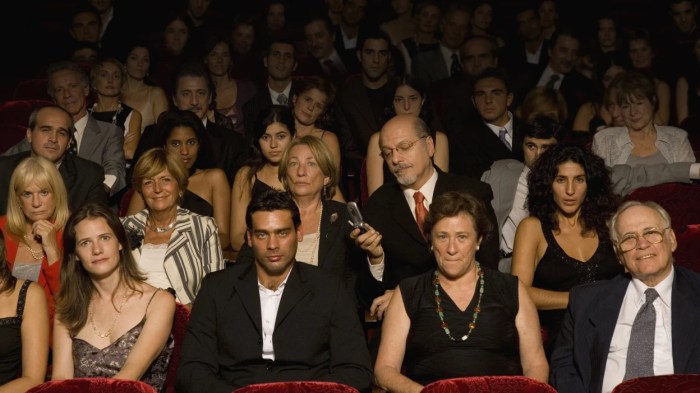London theater lasers phone users sets the stage for this enthralling narrative, offering readers a glimpse into a story that is rich in detail and brimming with originality from the outset. The vibrant theater scene in London is undergoing a dramatic transformation, embracing technology to create immersive and interactive experiences. Laser technology is captivating audiences with stunning visual effects, while the integration of mobile devices adds a new dimension to storytelling and audience participation. This exploration delves into the evolution of London theater, highlighting the impact of these technological advancements on the art form.
From dazzling laser displays that transport audiences to fantastical worlds to mobile apps that allow viewers to interact with the performance, London theaters are pushing the boundaries of theatrical innovation. This exploration examines the specific types of laser technology used, the ways mobile devices are being incorporated, and the potential future of this exciting trend. The story unfolds, revealing the impact of these technological innovations on audience engagement, storytelling, and the very nature of the theatrical experience.
The Role of Mobile Devices in London Theater: London Theater Lasers Phone Users

The use of mobile devices in London theater has become increasingly prevalent, transforming the way audiences experience live performances. From interactive elements to audience participation, mobile devices are revolutionizing the traditional theater experience, offering new avenues for storytelling and engagement.
Examples of Mobile Device Integration in London Theater, London theater lasers phone users
London’s theater scene has embraced mobile devices, with several productions successfully incorporating them into their performances.
- “The Curious Incident of the Dog in the Night-Time” (National Theatre, 2012): This production utilized audience members’ mobile phones to create a dynamic and immersive environment. During the performance, the audience received text messages from the protagonist, Christopher, allowing them to feel more connected to his journey.
- “The Encounter” (National Theatre, 2015): This immersive theater experience used headphones and mobile devices to guide the audience through a virtual reality journey. The technology created a highly personal and intimate experience, blurring the lines between reality and fiction.
- “The Jungle” (Young Vic, 2017): This production, set in a refugee camp, incorporated mobile phones into the storytelling. The audience could receive text messages from the characters, providing a deeper understanding of their experiences and perspectives.
Mobile Device Applications in Theater
Mobile devices are employed in a variety of ways to enhance the theater experience.
- Audience Participation: Mobile devices allow for audience interaction, creating a more immersive and engaging experience. For example, audiences can vote on plot choices or participate in interactive games, making them active participants in the performance.
- Interactive Elements: Mobile devices can be used to create interactive elements within the performance. For instance, audience members can scan QR codes to access additional information about the characters, setting, or historical context.
- Enhanced Storytelling: Mobile devices can enhance storytelling by providing additional layers of information or perspectives. Audiences can use their phones to access pre-show content, watch behind-the-scenes footage, or listen to audio recordings that enrich their understanding of the production.
Advantages and Disadvantages of Using Mobile Devices in Theater
While mobile devices offer exciting possibilities for theater, their use also presents certain challenges.
- Audience Engagement: Mobile devices can significantly increase audience engagement by providing interactive elements and opportunities for participation.
- Accessibility: Mobile devices can make theater more accessible to audiences with disabilities. For example, they can provide subtitles, audio descriptions, or interactive maps for people with visual or auditory impairments.
- Potential Distractions: The use of mobile devices can also lead to distractions for both the audience and performers. If not properly managed, audience members may be tempted to use their phones for other purposes, disrupting the flow of the performance.
The future of London theater is bright, with the potential for even more creative and immersive experiences. As laser technology and mobile devices continue to evolve, we can expect to see even more innovative applications in theatrical productions. Imagine a world where audiences can use their phones to navigate virtual landscapes within a play, or where lasers create interactive environments that respond to audience movements. The possibilities are endless, and the London theater scene is leading the way in this exciting new era of interactive storytelling.
Imagine London’s West End theaters, lasers dancing across the stage, and phone users suddenly finding their screens turned into dazzling displays. While that might seem like a scene from a sci-fi movie, it’s not entirely far-fetched, especially with Sony teasing its latest innovations at MWC 2016 sony teases mwc 2016. Perhaps the next generation of smartphones will have the ability to interact with light in ways we haven’t even dreamed of, turning everyday devices into portals to interactive experiences.